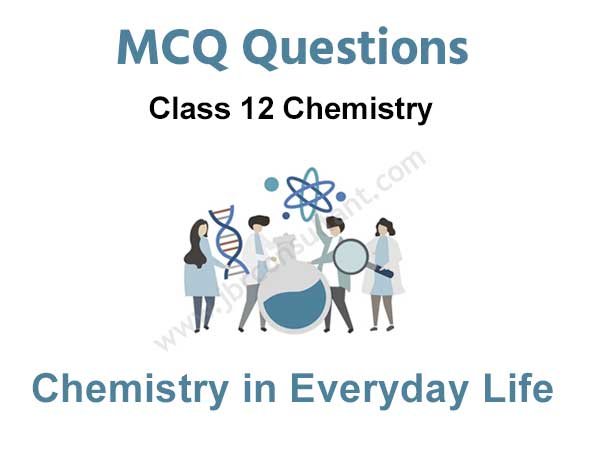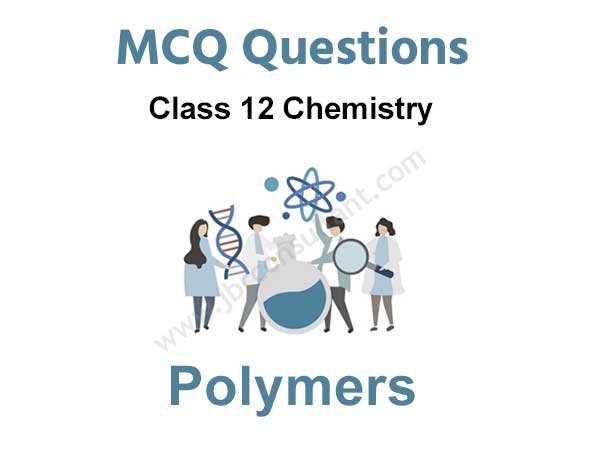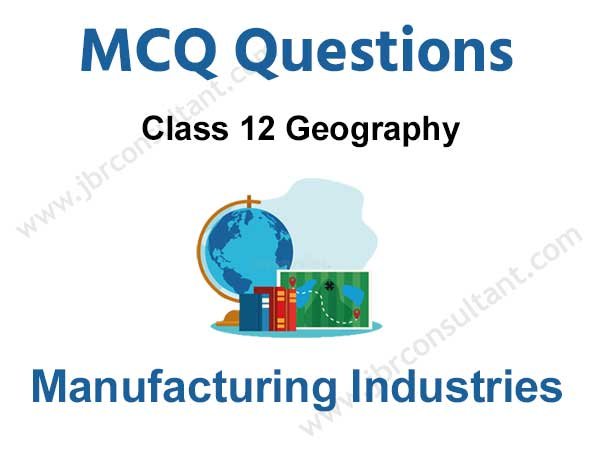Surface Chemistry Class 12 MCQ Questions PDF is one of the best strategies to prepare for the CBSE Class 12 Board exam. If you want to complete a grasp concept or work on one’s score, there is no method except constant practice. Students can improve their speed and accuracy by doing more Class 12 Surface Chemistry MCQ with answers pdf which will help them all through their board test.
Surface Chemistry Class 12 Chemistry MCQ Questions with Answers
Class 12 Chemistry MCQ with answers are given here to chapter Surface Chemistry. These MCQs are based on the latest CBSE board syllabus and relate to the latest Class 12 Chemistry syllabus. By Solving these Class 12 MCQs, you will be able to analyze all of the concepts quickly in the chapter and get ready for the Class 12 Annual exam.
Learn Chemical Kinetics Class 12 MCQ with answers pdf free download according to the latest CBSE and NCERT syllabus. Students should prepare for the examination by solving Class 12 Surface Chemistry MCQ with answers pdf given below.
Question 1. If x is amount of adsorbate and m is amount of adsorbent, which of the following relations is not related to adsorption process?
(a) x/m = f (p) at constant T
(b) x/m = f (T) at constant p
(c) p = f (T) at constant (x/m)
(d) x/m = p ×T
Answer
D
Question 2. Which one of the following characteristics is associated with adsorption?
(a) DG and DH are negative but DS is positive.
(b) DG and DS are negative but DH is positive.
(c) DG is negative but DH and DS are positive.
(d) DG, DH and DS all are negative.
Answer
D
Question 3. In Freundlich adsorption isotherm, the value of 1/n is
(a) between 0 and 1 in all cases
(b) between 2 and 4 in all cases
(c) 1 in case of physical absorption
(d) 1 in case of chemisorption.
Answer
A
Question 4. A plot of log(x/m) versus log P for the adsorption of a gas on a solid gives a straight line with slope equal to
(a) log k
(b) –log k
(c) n
(d) 1/n
Answer
D
Question 5. Which is not correct regarding the adsorption of a gas on surface of a solid?
(a) On increasing temperature adsorption increases continuously.
(b) Enthalpy and entropy change is negative.
(c) Adsorption is more for some specific substance.
(d) It is a reversible reaction.
Answer
A
Question 6. The Langmuir adsorption isotherm is deduced using the assumption
(a) the adsorption sites are equivalent in their ability to adsorb the particles
(b) the heat of adsorption varies with coverage
(c) the adsorbed molecules interact with each other
(d) the adsorption takes place in multilayers.
Answer
A
Question 7. The enzyme which hydrolyses triglycerides to fatty acids and glycerol is called
(a) maltase
(b) lipase
(c) zymase
(d) pepsin.
Answer
B
Question 8. Which one of the following statements is not correct?
(a) The value of equilibrium constant is changed in the presence of a catalyst in the reaction at equilibrium.
(b) Enzymes catalyse mainly biochemical reactions.
(c) Coenzymes increase the catalytic activity of enzyme.
(d) Catalyst does not initiate any reaction.
Answer
A
Question 9. Which one of the following statements is incorrect about enzyme catalysis?
(a) Enzymes are mostly proteinous in nature.
(b) Enzyme action is specific.
(c) Enzymes are denatured by ultraviolet rays and at high temperature.
(d) Enzymes are least reactive at optimum temperature.
Answer
D
Question 10. In a chemical reaction, catalyst
(a) decreases the energy of activation
(b) increases the energy of activation
(c) does not change energy of activation
(d) None of the above
Answer
A
Question 11. According to the adsorption theory of catalysis, the speed of the reaction increases because
(a) the concentration of reactant molecules at the active centres of the catalyst becomes high due to adsorption
(b) in the process of adsorption, the activation energy of the molecules becomes large
(c) adsorption produces heat which increases the speed of the reaction
(d) adsorption lowers the activation energy of the reaction.
Answer
D
Question 12. Which of the following reaction requires catalyst?
(a) S + O2 → SO2
(b) C + O2 → CO2
(c) 2SO2 + O2 → 2SO3
(d) All of the above
Answer
C
Question 13. A catalyst
(a) lowers the activation energy
(b) changes the rate constant
(c) changes the product
(d) itself destroys in the reaction
Answer
A
Question 14. Assertion (A) Catalyst increases the rate of a reaction.
Reason (R) In presence of a catalyst, the activation energy of the reaction increases. The correct answer is
(a) Both A and R are correct and R is the correct explanation of A
(b) Both A and R are correct but R is not the correct explanation of A
(c) A is correct but R is incorrect
(d) Assertion is not correct, but Reason is correct
Answer
C
Question 15. Active charcoal is a good catalyst because
(a) made up of carbon atoms
(b) is very reactive
(c) has more adsorption power
(d) has inert nature toward reagent
Answer
C
Question 16. Catalyst in a reaction
(a) lowers the activation energy
(b) increases the rate of reaction
(c) Both (a) and (b)
(d) initiates the reaction
Answer
C
Question 17. Identify the correct statement regarding enzymes.
(a) Enzymes are specific biological catalysts that can normally function at very high temperatures (T – 1000 K)
(b) Enzymes are normally heterogeneous catalysts that are very specific in their action
(c) Enzymes are specific biological catalysts that cannot be poisoned
(d) Enzymes are specific biological catalysts that possess well defined active sites
Answer
D
Question 18. Formation of ammonia from H2 and N2 by Haber’s process using Fe is an example of
(a) heterogeneous catalysis
(b) homogeneous catalysis
(c) enzyme catalysis
(d) non-catalytic process
Answer
A
Question 19. Peptisation involves
(a) precipitation of colloidal particles
(b) disintegration of colloidal aggregates
(c) evaporation of dispersion medium
(d) Impact of molecules of the dispersion medium on the colloidal particles
Answer
B
Question 20. Which of the following reactions is an example of heterogeneous catalysis?
(a) ![]() (gas phase)
(gas phase)
(b) ![]() (g)
(g)

(d) ![]()
Answer
D
Question 21. Which mixture of the solutions will lead to the formation of negatively charged colloidal [AgI]I– sol ?
(a) 50 mL of 0.1 M AgNO3 + 50 mL of 0.1 M KI
(b) 50 mL of 1 M AgNO3 + 50 mL of 1.5 M KI
(c) 50 mL of 1 M AgNO3 + 50 mL of 2 M KI
(d) 50 mL of 2 M AgNO3 + 50 mL of 1.5 M KI
Answer
B
Question 22. A colloidal system has particles of which of the following size?
(a) 10–9 m to 10–12 m
(b) 10–6 m to 10–9 m
(c) 10–4 m to 10–10 m
(d) 10–5 m to 10–7 m
Answer
B
Question 23. Measuring zeta potential is useful in determining which property of colloidal solution?
(a) Viscosity
(b) Solubility
(c) Stability of the colloidal particles
(d) Size of the colloidal particles
Answer
C
Question 24. The coagulation values in millimoles per litre of the electrolytes used for the coagulation of As2S3 are given below :
I. (NaCl) = 52, II. (BaCl2) = 0.69,
III. (MgSO4) = 0.22
The correct order of their coagulating power is
(a) I > II > III
(b) II > I > III
(c) III > II > I
(d) III > I > II
Answer
C
Question 25. Fog is a colloidal solution of
(a) solid in gas
(b) gas in gas
(c) liquid in gas
(d) gas in liquid.
Answer
C
Question 26. On which of the following properties does the coagulating power of an ion depend?
(a) The magnitude of the charge on the ion alone
(b) Size of the ion alone
(c) Both magnitude and sign of the charge on the ion
(d) The sign of charge on the ion alone
Answer
C
Question 27. Which one of the following forms micelles in aqueous solution above certain concentration?
(a) Dodecyl trimethyl ammonium chloride
(b) Glucose
(c) Urea
(d) Pyridinium chloride
Answer
A
Whoever needs to take the CBSE Class 12 Board Exam should look at this MCQ. To the Students who will show up in CBSE Class 12 Chemistry Board Exams, It is suggested to practice more and more questions. Aside from the sample paper you more likely had solved. These Surface Chemistry Class 12 MCQ Questions PDF are ready by our subject specialists themselves.
Question 28. Which property of colloidal solution is independent of charge on the colloidal particles?
(a) Electroosmosis
(b) Tyndall effect
(c) Coagulation
(d) Electrophoresis
Answer
B
Question 29. The protecting power of lyophilic colloidal sol is expressed in terms of
(a) coagulation value
(b) gold number
(c) critical micelle concentration
(d) oxidation number.
Answer
B
Question 30. Which one of the following method is commonly used method for destruction of colloid?
(a) Dialysis
(b) Condensation
(c) Filteration by animal membrane
(d) By adding electrolyte
Answer
D
Question 31. At the critical micelle concentration (CMC) the surfactant molecules
(a) associate
(b) dissociate
(c) decompose
(d) become completely soluble.
Answer
A
Question 32. Position of non-polar and polar part in micelle
(a) polar at outer surface but non-polar at inner surface
(b) polar at inner surface non-polar at outer surface
(c) distributed over all the surface
(d) are present in the surface only.
Answer
A
Question 33. Preparation of Lyophobic sols by chemical method involves
(a) double decomposition
(b) oxidation & reduction
(c) hydrolysis
(d) all of these
Answer
D
Question 34. The ability of anion, to bring about coagulation of a given colloid, depends upon
(a) magnitude of the charge
(b) both magnitude and charge
(c) its charge only
(d) sign of the charge alone.
Answer
B
Question 35. When a few typical solutes are separated by a particular selective membrane such as protein particles, blood corpuscles, this process is called
(a) transpiration
(b) endosmosis
(c) dialysis
(d) diffusion
Answer
C
Question 36. Under the influence of an electric field, the particles in a sol migrate towards cathode. The coagulation of the same sol is studied using NaCl, Na2SO4 and Na3PO4 solutions. Their coagulating values will be in the order
(a) NaCl > Na2SO4 > Na3PO4
(b) Na2SO4 > Na3PO4 > NaCl
(c) Na3PO4 > Na2SO4 > NaCl
(d) Na2SO4 > NaCl > Na3PO4
Answer
A
Question 37. A colloidal solution is subjected to an electrical field. The particles move towards anode. The coagulation of same sol is studied using NaCl, BaCl2 and AlCl3 solutions. Their coagulating power should be
(a) NaCl > BaCl2 > AlCl3
(b) BaCl2 > AlCl3 > NaCl
(c) AlCl3 > BaCl2 > NaCl
(d) BaCl2 > NaCl > AlCl3
Answer
C
Question 38. Which one of the following impurities present in colloidal solution cannot be removed by electrodialysis?
(a) Sodium chloride
(b) Potassium sulphate
(c) Urea
(d) Calcium chlorid
Answer
C
Question 39. Gold numbers of protective colloids A, B, C and D are 0.50, 0.01, 0.10 and 0.005, respectively. The correct order of their protective powers is
(a) D < A < C < B
(b) C < B < D < A
(c) A < C < B < D
(d) B < D < A < C
Answer
C
Question 40. The disease kala azar is caused by
(a) colloidal antimony
(b) milk of magnesia
(c) argyrols
(d) colloidal gold
Answer
A
Question 41. Which one of the following reactions is an example of auto-catalysis?
(a) 2AsH3(s) → 2As(s) + 3H2(g)
(b) N2(g) + 3H2(g) →Fe(g) 2NH3(g)
(c) 2SO2(g) + O2(g) →No(g) 2SO3(g)
(d) C12H22O11(/) + H2O(/) →H+(/) C6H12O6 (/) + C6H12O6(/)
Answer
A
Question 42. Amount of gas adsorbed per gram of adsorbent increases with pressure, but after certain limit is reached, adsorption becomes constant. It is due to
(a) multilayers are formed
(b) desorption takes place
(c) temperature is increased
(d) absorption also starts
Answer
A
Question 43. Which of the following statements is incorrect regarding physisorption?
(a) It occurs because of van der Waals’ forces
(b) More easily liquefiable gases are adsorbed readily
(c) Under high pressure, it results into multimolecular layer on adsorbent surface
(d) Enthalpy of adsorption (ΔHadsorption) is slow and positive
Answer
D
Question 44. The volume of the gases H2, CH4, CO2 and NH3 adsorbed by one of activated charcoal at 298 K are in order
(a) H2 > CO2 > CH4 > NH3
(b) H2 > CH4 > CO2 > NH3
(c) NH3 > CO2 > CH4 > H2
(d) NH3 > CH4 > CO2 > H2
Answer
C
Question 45. Given below, catalyst and corresponding process/ reaction are matched. The mismatch is
(a) [RhCl(PPh3)2] : Hydrogenation
(b) TiCl4 + Al(C2H5)3 : Polymerisation
(c) V2O5 : Haber : Bosch process
(d) Nickel : Hydrogenation
Answer
C
Question 46. The decomposition of H2O2 may be checked by adding small quantity of phosphoric acid. This is an example of
(a) neutralisation
(b) negative catalysis
(c) positive catalysis
(d) catalytic poisoning
Answer
B
Question 47. For a linear plot of log(x /m ) versus log p in a Freundlich adsorption isotherm, which of the following statements is correct? (k and n are constants)
(a) 1/n appears as the intercept
(b) Only 1/n appears as the slope
(c) log (1/n) appears as the intercept
(d) Both k and 1/n appear in the slope term
Answer
B
Question 48. In the Freundlich adsorption equation x/m = kp1/n , the value of n is
(a) always greater than one
(b) always smaller than one
(c) always equal to one
(d) greater than one at low temperature and smaller than one at high temperature
Answer
A
Question 49. The Langmuir adsorption isotherm is deduced using which of the following assumptions?
(a) The adsorption takes place in multilayer
(b) The adsorbed molecules interact with each other
(c) The adsorption sites are equivalent in their ability to absorb the particles
(d) The heat of adsorption varies with coverage
Answer
C
Question 50. In Langmuir’s model of adsorption of a gas on a solid surface,
(a) the rate of dissociation of adsorbed molecules from the surface does not depend on the surface covered
(b) the adsorption at a single site on the surface may involve multiple molecules at the same time
(c) the mass of gas striking a given area of surface is proportional to the pressure of the gas
(d) the mass of gas striking a given area of surface is independent of the pressure of the gas
Answer
C
Question 51. Adsorption is a surface phenomenon because
(a) adsorbent has large surface area
(b) chemical compounds formed are not on the surface of adsorbent
(c) only the surfaces of the adsorbent have unutilised valencies
(d) None of the above
Answer
C
Question 52. Surface area per gram of the adsorbent is called
(a) molar surface area
(b) normal surface area
(c) specific surface area
(d) equivalent surface area
Answer
C
Question 53. Which one of the following characteristics is not correct for physical adsorption?
(a) Adsorption on solids is reversible
(b) Adsorption increases with increase in temperature
(c) Adsorption is spontaneous
(d) Both enthalpy and entropy of adsorption are negative
Answer
B
Question 54. Which of the following assumptions is not correct about Langmuir adsorption isotherm?
(a) The solid surface is homogeneous and has a fixed number of adsorption sites
(b) Every adsorption site is equivalent
(c) The adsorbed layer is not uniform all over the adsorbent
(d) The adsorbed gas behaves ideally in the vapour phase
Answer
C
Question 55. In which of the following reactions, heterogeneous catalysis is involved?
(i) 2SO2 (g) +O2(g) →NO(g) 2SO3NO(g)
(ii) 2SO2(g) →Pt(s) 2SO3
(iii) N2(g) + 3H2(g) →Fe(s) 2SO3(g)
(iv) CH3COOCH3 (/) + H2O→HCl (/)
CH3COOH(aq)+ CH3OH(aq)
(a) (ii) and (iii)
(b) (ii), (iii) and (iv)
(c) (i), (ii) and (iii)
(d) Only (iv)
Answer
A

You can easily get good marks If you study with the help of Class 12 Surface Chemistry MCQ with answers PDF. We trust that information provided is useful for you. NCERT MCQ Questions for Class 12 Surface Chemistry PDF Free Download would without a doubt create positive results.
We hope the information shared above in regards to Class 12 MCQ on Surface Chemistry pdf with answers has been helpful to you. if you have any questions regarding CBSE Surface Chemistry Class 12 MCQ PDF, write a comment below and we will get back to you as soon as possible.
Frequently Asked Question (FAQs)
How many MCQ questions are there in Class 12 Chemistry Chapter 5?
In Class 12 Chemistry Chapter 5, we have provided 55 Important MCQ Questions, But in the future, we will add more MCQs so that you can get good marks in the Class 12 exam.
Can we score good marks in Class 12 Chemistry with the help of Surface Chemistry MCQ Questions?
Yes, MCQ Question is one of the best strategies to make your preparation better for the CBSE Board Exam. It also helps to know the student’s basic understanding of each chapter. So, You can score good marks in the Class 12 Chemistry exam.


